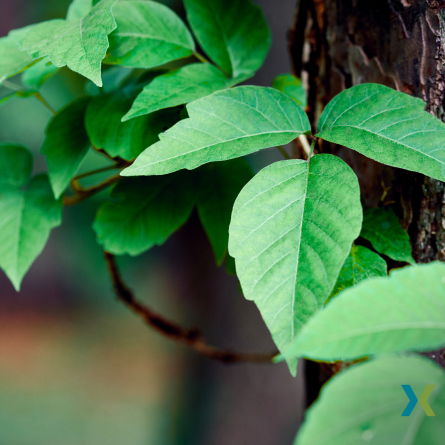As warmer weather beckons us outdoors, it’s essential to be aware of potential hazards, including poison ivy, oak, and sumac. These plants can cause uncomfortable skin reactions, but with the right knowledge, you can recognize, avoid, and treat exposure effectively.
Recognizing Poison Ivy, Oak, and Sumac
Understanding how to identify these plants is the first step in avoiding them. Here’s how to recognize each one:
Poison Ivy:
- Appearance: Poison ivy typically has clusters of three shiny green leaves that may have red tones in the spring and fall. The leaves are smooth-edged or slightly toothed.
- Growth: It can grow as a vine or a shrub, often found in wooded areas, fields, and along riverbanks.
Poison Oak:
- Appearance: Poison oak also has leaves in clusters of three, but they are lobed and resemble oak leaves. The leaves are usually duller green and may have a hairy texture.
- Growth: It can grow as a shrub or a climbing vine, commonly found in dry, wooded areas.
Poison Sumac:
- Appearance: Poison sumac has 7-13 leaflets arranged in pairs with a single leaflet at the end. The leaves are smooth-edged and may have red stems.
- Growth: It grows as a tall shrub or small tree, often found in wet, swampy areas.
Symptoms of Exposure
Contact with the oil (urushiol) from these plants can cause an allergic reaction, resulting in:
- Redness and Itching: The skin becomes red and itchy, often within a few hours to a couple of days after exposure.
- Blisters: Small, fluid-filled blisters may form, which can be painful and cause significant discomfort.
- Swelling: The affected area may swell, especially if scratched or irritated further.
Preventing Exposure
Taking preventive measures can help you avoid contact with these plants:
- Wear Protective Clothing: When hiking or working in areas where these plants may grow, wear long sleeves, pants, gloves, and boots.
- Know Your Surroundings: Learn to identify poison ivy, oak, and sumac, and stay on clear paths when hiking.
- Use Barriers: Apply a skin barrier cream designed to protect against urushiol exposure.
- Clean Tools and Pets: Wash any tools, gear, or pets that might have come into contact with the plants, as the oil can linger on surfaces.
Treating Exposure
If you come into contact with poison ivy, oak, or sumac, take the following steps to manage and treat the reaction:
- Wash the Area Immediately:
- Use soap and water to wash the affected area as soon as possible, ideally within 30 minutes of exposure.
- Wash under fingernails and any clothing or objects that may have been contaminated.
- Soothe the Skin:
- Apply calamine lotion, hydrocortisone cream, or an over-the-counter antihistamine to reduce itching and inflammation.
- Cool compresses or oatmeal baths can also help soothe irritated skin.
- Avoid Scratching:
- Scratching can cause the rash to spread and potentially lead to infection. Keep nails trimmed and consider wearing gloves at night if itching is severe.
- Medications:
- Over-the-counter antihistamines can help reduce itching and discomfort.
- In severe cases, a healthcare provider may prescribe oral corticosteroids or other medications.
- Monitor for Infection:
- If blisters break and ooze, keep the area clean and covered to prevent infection.
- Seek medical attention if you notice signs of infection, such as increased redness, swelling, pus, or fever.
When to Seek Medical Attention
While most cases of poison ivy, oak, or sumac can be treated at home, seek medical attention if:
- The rash is widespread or on sensitive areas like the face or genitals.
- You experience difficulty breathing or swallowing, which could indicate a severe allergic reaction.
- There are signs of infection, such as increased pain, swelling, redness, or pus.
Conclusion
By learning to recognize poison ivy, oak, and sumac, and taking steps to prevent and treat exposure, you can enjoy your outdoor activities with confidence. At Next Level Urgent Care, we’re here to provide you with the care and information you need to stay safe and healthy. If you experience a severe reaction or need medical assistance, visit one of our convenient locations for prompt and professional care.
![NL Wordmark [Gradient] NL Wordmark [Gradient]](https://www.nextlevelurgentcare.com/wp-content/uploads/elementor/thumbs/NL-Wordmark-Gradient-7fm1iv6f0zylwqrxpy8kifrnrzsluqzzzofvqvs6smo.png)
